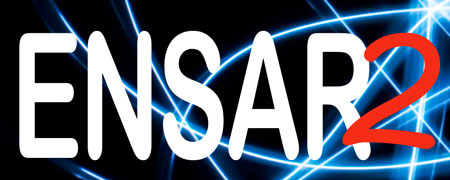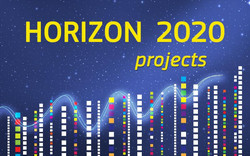Task3 Hybrid arrays and their Application. U York
One application of the hybrid or phoswich design is the forward-endcap of the CALIFA calorimeter and spectrometer of the R3B set-up at the future FAIR facility, a common European effort in nuclear basic science. CALIFA is intended to measure both protons and -rays in a broad range of energies and, therefore, all components envisaged in this JRA from detector design via readout and electronics up to digital signal processing enter this development. Of particular importance is the application of readout devices insensitive to magnetic fields. The particle identification is the challenge for pulse shape analysis performed online in the digital frontend electronics. The ongoing developments in detector technology for nuclear physics such as novel scintillators have considerable relevance to societal applications outside fundamental research. Such applications span a broad range from medical imaging to homeland security and oil and gas exploration. In terms of medical imaging, the relevant techniques are PET and SPECT imaging. The very high timing resolution and energy resolution of novel scintillators could be relevant to improvements in PET imaging or realising multi-gamma PET imaging. In SPECT imaging, a Compton camera approach could remove the inefficiency of physical collimation. Hybrid detector systems (or phoswich) with layers of different scintillators or semiconductors are very relevant to this application. Another recognised trend in medical imaging is the desirability to have combined imaging such as PET or SPECT/MRI where the two modalities of anatomical and function imaging are combined for greater sensitivity. Scintillators, particularly novel scintillators with improved energy resolution, coupled to silicon photomultipliers may provide a route forward for realising these goals. Timing resolutions better than 1 ns for silicon photomultipliers such as those produced by SensL now mean that this technology is fully relevant to PET imaging. In particular, the insensitivity to magnetic fields can be relevant for further applications in nuclear medicine. Applications are also foreseen, and have already begun to be exploited, in the area of homeland security where illicit movement of fissile material and dirty bombs are of particular concern which can be addressed only in a common European effort. This can range from large portal monitors where He-3 replacement is a priority, to hand-held gamma-ray spectrometers. There is also a significant market for the latter in the aftermath of the Fukushima incident. Another potential market is the oil and gas sector. In well logging, novel scintillators with improved energy resolution such as cerium bromide may be used to capture details on strata more rapidly, and scintillator materials such as CLYC offer the potential for discriminating gamma rays from thermal neutrons in these applications. Advances in signal processing and digital electronics offer considerable scope for development and improvements for many of the application fields identified above. Greater sensitivity can be envisaged in radionuclide identification and characterisation. The availability of ASICs and other highly-integrated digital electronics, an area in which nuclear physics excels, are widely applicable to applications work. Modern filter algorithms like Kalman or moving window de-convolutions allow here for a simple control by parameter settings to provide an unprecedented flexibility in the different fields of applications. This would allow for a variable scaling in such system useful in small lab applications as well as in large-scale detector arrays An area of application that should not be neglected is that to other areas of basic science. Here, there is strong potential for knowledge exchange and combined efforts. For example, gamma-ray astronomy was the initial driver of novel scintillator technology such as lanthanum bromide.



